In 1974, I made the shivery-scary move from small town to big city. Toronto was my first and only choice. It was absolutely the right decision and I have a long list of fond memories from those first few years. The prime addresses on my memory lane were the restaurants and, in particular, the classic French restaurants. Napoleon, La Maison Basque, La Chaumière. And those classic French dishes. Cuisses de grenouille, maigret de canard, coq au vin, ris de veau.
I loved French restaurants. I missed French restaurants. Particularly in the last few years in San Miguel de Allende. I went back through my notes and, though I’d had some excellent French dishes at places like the just-outside San Miguel restaurant, El Vergel, the last time I had what I would call a traditional French dinner in San Miguel was when Jose Bossuet was the chef at Cafe Contento back in 2016.
So imagine how excited I was a year or so ago when I saw the word “Brasserie” in the name of a new restaurant that opened in San Miguel. Could it be? Might it be? A good old-fashioned restaurant Français?

I went online. I found a menu. Soupe a l’oignon, steak frites, coq au vin. Yes! This was French. Very French. I also found a familiar name. Jorge Avendaño. The very respected chef/owner of Bastardo. The guy I have never once seen in my life without a back-to-front baseball cap. The man who had made a similar move to what Don Day had, only fifty years later. He’d moved from the country to the city, in part, to experience fine French cuisine.
We had our good friend Therese Wong staying with us during our last week of snowbird season. And when good friends are staying with you, they always feel like they should take you out for a good meal. I was getting antsy for French again. I wanted rich, very rich sauces. Don Day’s Wife and I told Therese we wanted to go to Salvages.
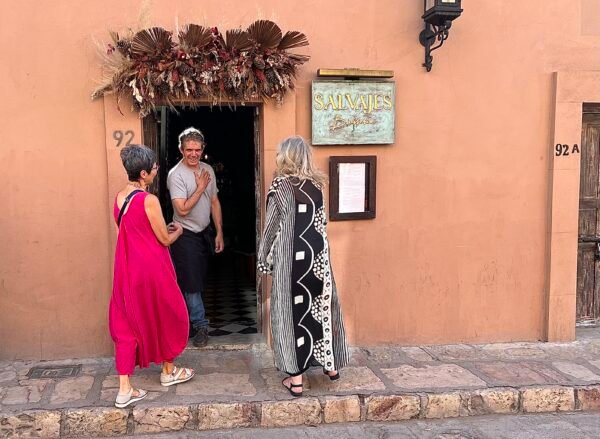
A lot of those old French restaurants in Toronto were in converted homes. So is Salvajes. The best tables in a lot of those old French restaurants in Toronto were on the second floor. As they are in Salvajes.

We settled in and focused on our usual and most pressing need, drinks. The ladies ordered glasses of a French sparkler, I ordered a beer, and we looked for a bottle of red to pair with dinner.
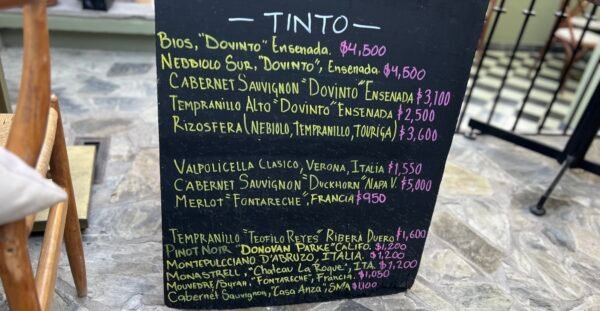
The short and sweet…or perhaps I should say short and dry…list comes on a blackboard. I liked the selection. Lots of classic old world grapes with only a tiny nod to Mexico (which, unfortunately, is often all that this country’s wine deserves). The order of the wines on the menu is a little confusing, call it even upside down. With the most expensive wines at the top of the list and the affordables down at the bottom. We decided on the French Syrah Mouvedre Fontareche for just over $1000 a bottle.
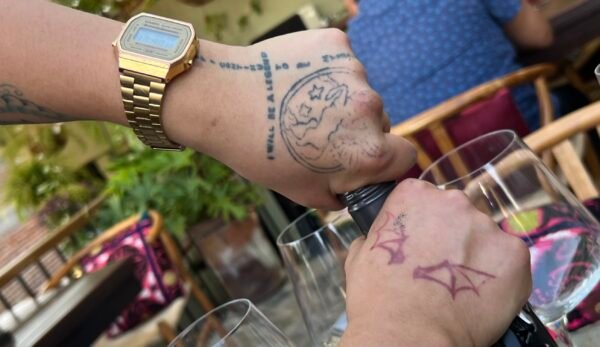
I was not happy when I realized that the waiter had opened instead a cheaper Merlot before I’d got a look at the label but he was an eager, young 18-year-old covered in almost as many tats as the chef so we went with it.
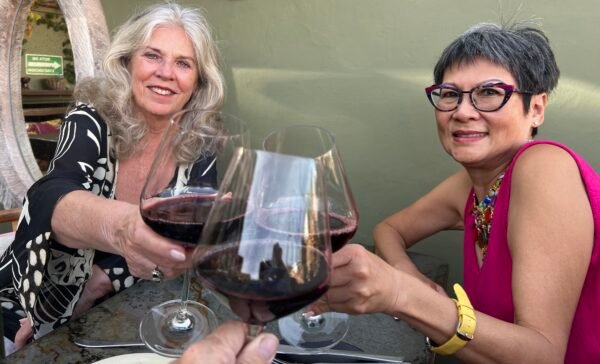
So much of classic French Cuisine is heavy, rich, filling and, to me, irresistible. Don Day’s Wife and Therese chose to start by sensibly splitting a frisée salad with lardons, croutons and poached egg.
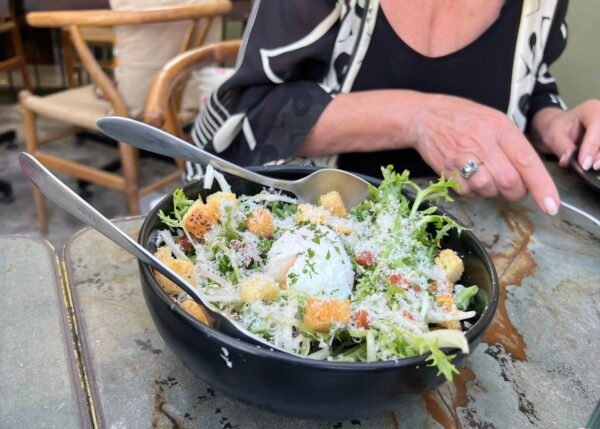
I knew before I ever left the house what I was going to start with. I chose the French onion soup.
My most pleasant memories of the soup go back to Gaston’s on Markham Street in Toronto, circa 1977, where the cutlery included a pair of scissors to hack your way through the Gruyère and Emmental jungle.
My less pleasant memories of French onion soup came about five years later when, now a single guy and recognizing the potential powers of charming a woman with the dish, I purchased two traditional looking brown and beige ceramic bowls with the single handles, two cans of Campbell’s onion soup, a loaf of thick sliced French bread and a half pound of Kraft Monterey Jack. The night went wonderfully. The morning went dismally. After spending close to an hour attempting to scrape the baked-on cheese off the bowls I decided French onion soup should be the exclusive domain of French restaurants.
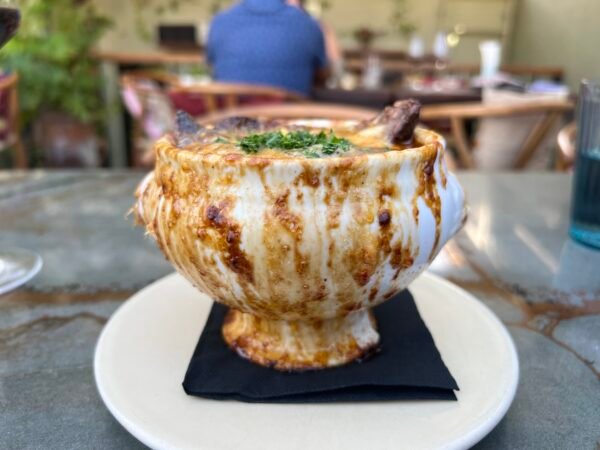
As my bowl arrived at Salvages, with all of its golden cheesy stripes, I couldn’t help sympathize with whoever had to remove them.
And how were the contents of that bowl? As good as I remembered at those Toronto restaurants in the seventies.
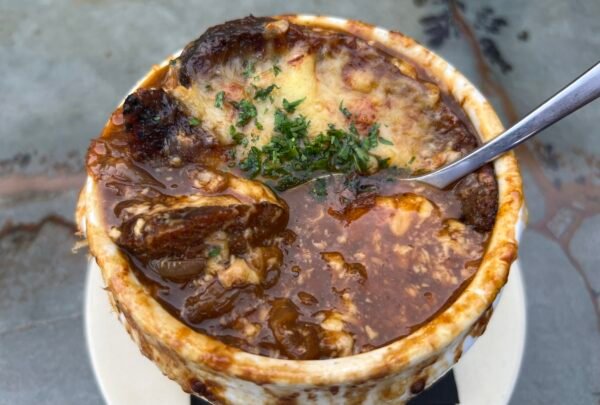
A good onion soup should have a nice balance between liquid and solids; Salvages soup has. A good onion soup should have chewable chunks of the root vegetable; Salvages soup does. The cheese in a good onion soup should be baked to the point just before it starts to burn. Salvages soup is. A good onion soup should not only be cheesy and oniony it should be meaty; Salvages soup is.
My second choice of dishes wasn’t easy. Nothing is easy to order after an onion soup because…well…you’re already full, very full.
Therese told us a friend had said that a Salvages filet mignon melts in your mouth. That was enough for Don Day’s Wife to order it and I knew by its size that I’d be getting a big taste.

Therese, herself, until recently, had thought she had a lifelong shellfish allergy. I thought she’d go for the lobster on toast and I thought right.
I was hung up on the choice of lamb ragout papardelle or coq au vin. But I never saw the word papardelle on those French menus back in the seventies. I ordered the coq au vin.
Now even if you don’t speak French, you can probably guess that a coq is a rooster and you’ll also perhaps know that, until Julia Child’s recipe in Mastering The Art Of French Cooking, most recipes included a rooster or a large hen that was no longer laying. In her book and on her television show, The French Chef, Julia Child, simply called for “cut-up frying chicken”.
In my experience, in recent years, restaurants have changed to the more savoury taste of all dark meat. Don Day’s Wife uses strictly thighs. Our host, Therese, told us she only uses legs and thighs. So I was quite shocked when I first sliced into Salvages coq au vin and discovered it was all breast.

Now it was very rich in flavor and quite moist but I still wanted to ask Jorge Avendaño, “Why white meat?”. Unfortunately, he’d flown the coop.
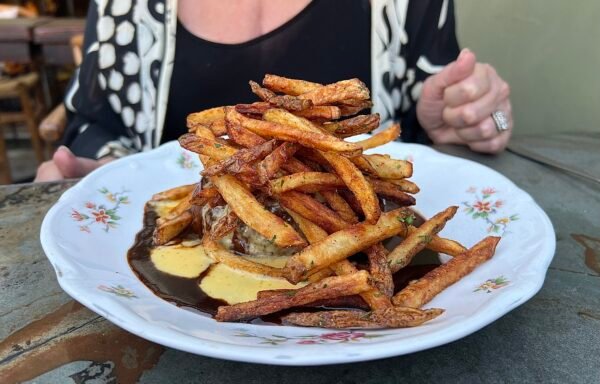
There are actually two sauces on Salvages’ filet, a green peppercorn and a hollandaise. Don Day’s Wife agreed with the raves. Yes, the meat is very tender and very tasty.
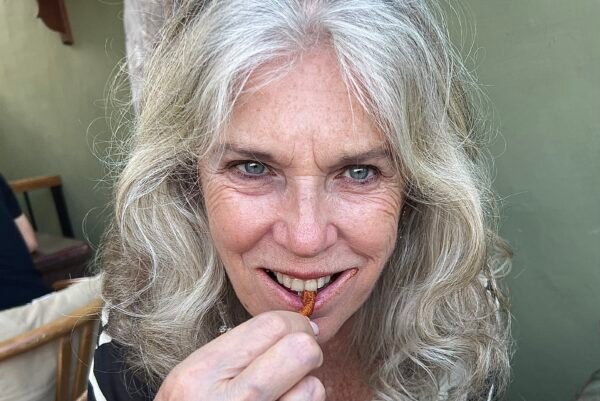
Plus there is another topping as well as the sauces on the meat: More than a few, twice fried, Russet potatoes which are perfect to dip into those two sauces. And, even after I had stolen a healthy chunk, there was still enough for a steak and eggs breakfast for Therese.
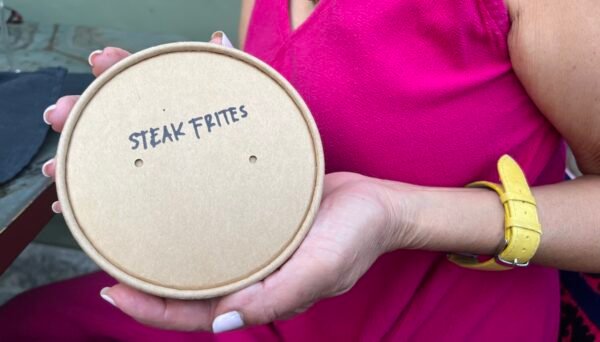
I don’t ever remember seeing lobster toast on the French restaurant menus of yesteryear and I don’t know what influenced Jorge Avendaño to add it to the menu. I saw it on quite a few plates though so it was obviously a good decision.

Therese cut off a big chunk for me to try. It was very buttery with some nice hints of salt and spicing. I thought of how it might be perfect at lunch but I wasn’t sure it was something I’d choose for a French dinner.
Salvages menu had shrunk considerably since our last visit. Gone were the bone marrow with escargots, the braised beef tongue, and the steak Rossini. But there’s still enough there that if you want classic French cuisine in central San Miguel de Allende as I so often do, it’s the place in this town to go to.

Salvages Brasserie is located at Calle Hidalgo 92 in San Miguel de Allende, Mexico. The restaurant is open from 1:00 to 10:00 pm, Tuesday through Saturday; Sunday, 10:00 am to 7:00 pm.


I’m going to miss the bone marrow and escargots. Nothing quite like it outside of Montreal.
The wine prices are even more outrageous than during our visit last Fall. The both of us had the coq a vin and it was very nice. Be careful during the rainy season because the roof cover leaks like a sieve. We relocated twice before finishing dinner. We will never return due to the wine prices. We much prefer Chamonix.
Did we forget dessert that night???